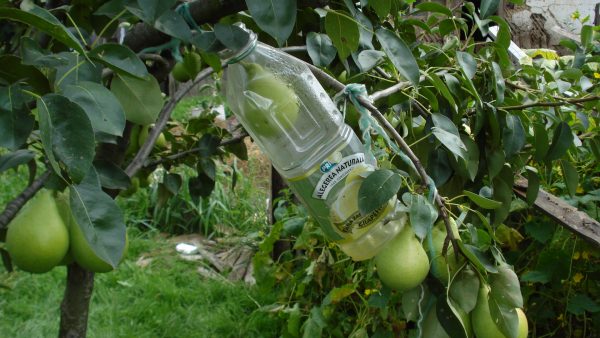Palinka sau palinca is a traditional fruit brandy from Europe, invented in the Middle Ages and the word derive from the Slavonic- stem paliti, “to burn, to distill”. Its a tradional drink made mainly in Hungary, Romania, Czech Republic, Poland and Slovakia.
Țuică is a traditional Transylvanian spirit – alchoolic drink that contains usually 40–55% alcohol made from plums. Other spirits that are produced from other fruit or from a cereal grain are called “rachiu” or “rachie” in Maramures.
Although I have unabashedly written many times about tuica, it’s time to dedicate a whole post to it.
I grew up in cities and to me, alcohol was something other people made in some far-off place and then bottled it and shipped it to a store for me to buy. How alcohol was made was a mysterious enigma.
In Romania, however, making your own alcohol is virtually a national right. Therefore over time I began to understand how it was done.
There are two kinds of alcohol, those that are fermented and those that are fermented and then distilled.
“Fermented” means yeast was added to something (grain, fruit, etc) and converted some of the sugars into alcohol. Roughly speaking, drinks that are (only) fermented are wine and beer.
The problem with fermenting a big batch of plums is that you get a big barrel of stinking, rotting fruit mixed in with the alcohol. Therefore this mess has to be distilled, which can be done in a number of ways, but always means a process by which the alcohol is separated from the other components of the liquid.
The most common distillation process is to heat the liquid and then capture the alcohol vapors in a (usually) copper tube, which then drips down into a container.
Almost all Romanian traditional strong drinks are made from fruit, which technically makes them a “brandy”. The term “brandy” simply refers to any alcohol made by fermenting and distilling fruit.
The fruit in Romania is almost always the plum, confusing called prune in Romanian (proo-neh), referring to the fresh fruit. The dried version, prune uscate refers to what in English are known as prunes.
Therefore fermenting and distilling plums is how the nationally famous drink tuica (tswee-ka) is made. In fact, it is estimated that over 75% of all the plums harvested in Romania are used to make tuica.
In Romania the term rachiu (rocky-you) just means that it is the same drink but made with a different kind of fruit (such as pears).
The very best tuica is made with nothing but plums and yeast and has no sugar added. It usually comes out crystal clear, looking identical as water and having little to no taste in the mouth. It is only when it hits the stomach that you truly feel its gut-warming power.
Palinca is simply a term people use to refer to tuica that’s been distilled a second (or third) time, meaning it is much stronger and has more alcohol per volume.
In general, for some reason, Hungarians often prefer palinca (i.e. the stronger stuff) over “regular” tuica.
Horinca, Jinars and Fatata are other terms that generally mean “very strong” tuica.
The drink slivovitz however is slightly different, as ground-up pits or stones from the plums are added in the fermentation process, which gives it a slightly nutty overtone. This drink is less common in Romania than it is elsewhere in this region of Europe.
In all cases, these drinks are usually consumed as just a shot (or two) right before digging into the big meal of the day, ie about 10-20ml in metric.
Although a few store brands of these drinks are palatable, for the truly good stuff, (including wine), it is best to find a person who made them at their home. In fact, the only alcohol regularly made better by factories in Romania is beer.
Once you’ve sampled (and presumably enjoyed) a few glasses of tuica, you can learn to determine its characteristics simply by sight and smell alone. If you see a little old lady on the sidewalk peddling old Fanta bottles filled with tuica, simply remove the cap and inhale to see if you’ve hit the jackpot.
Video : American Moonshine might have its origins from Romania


